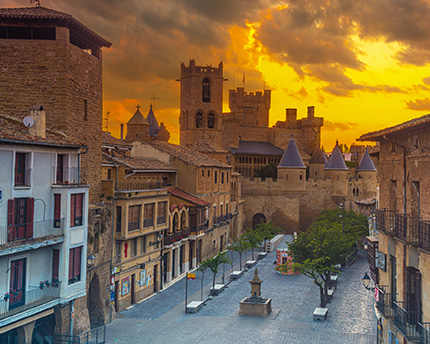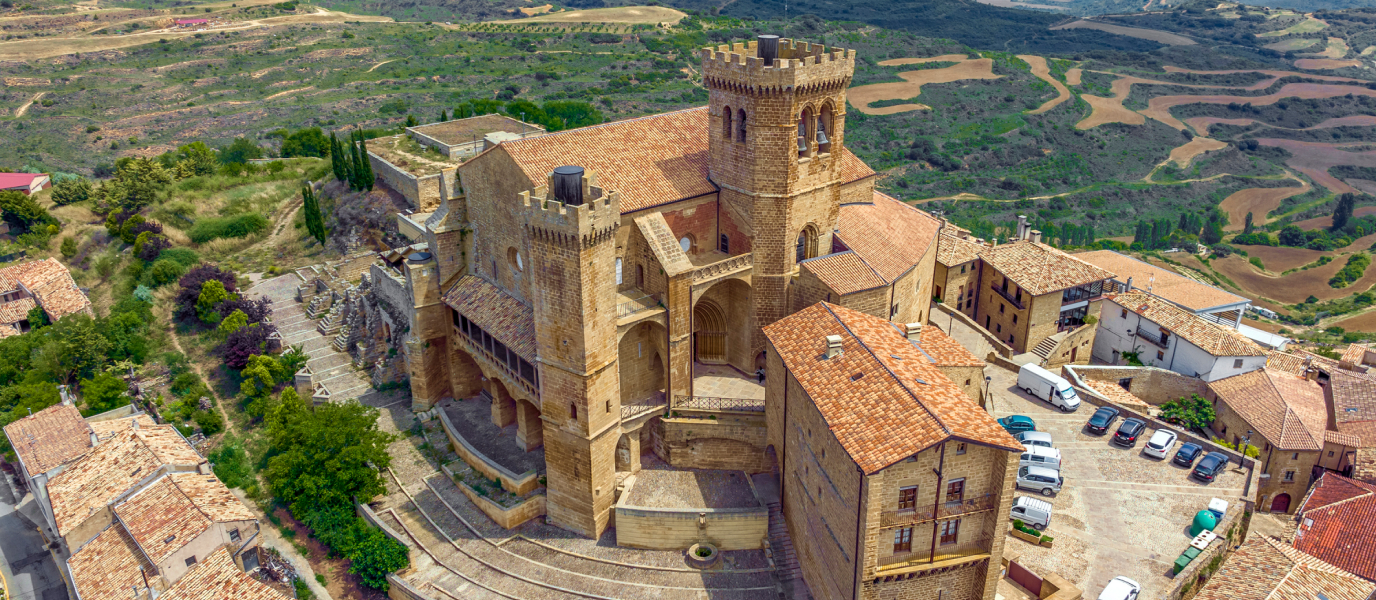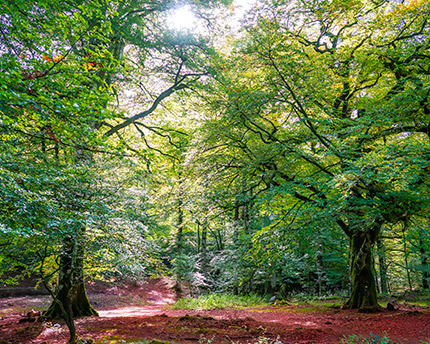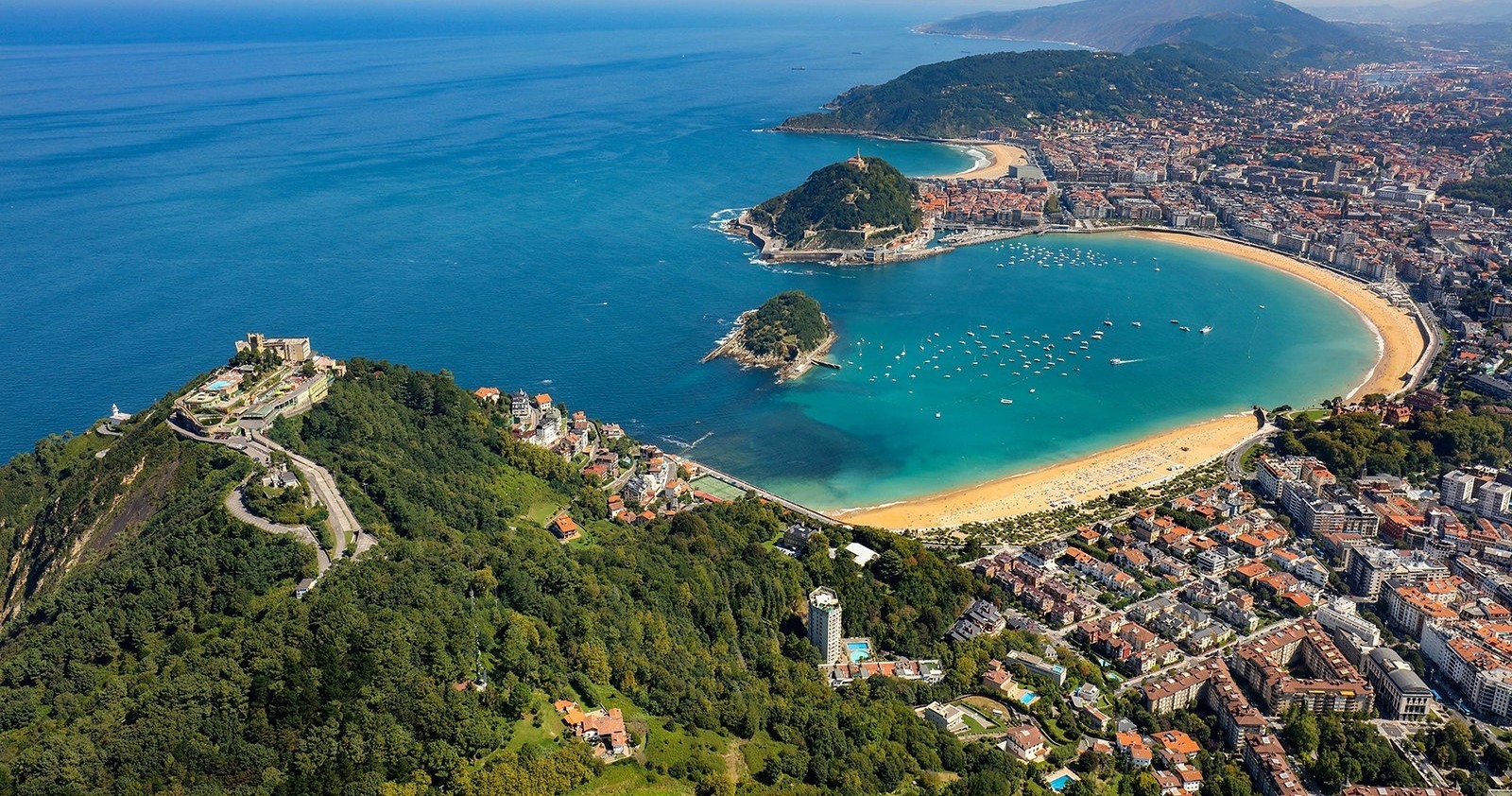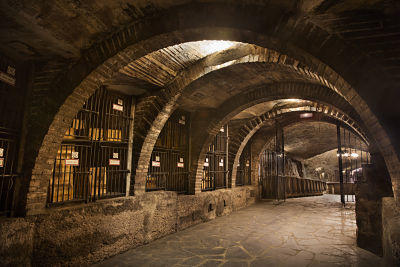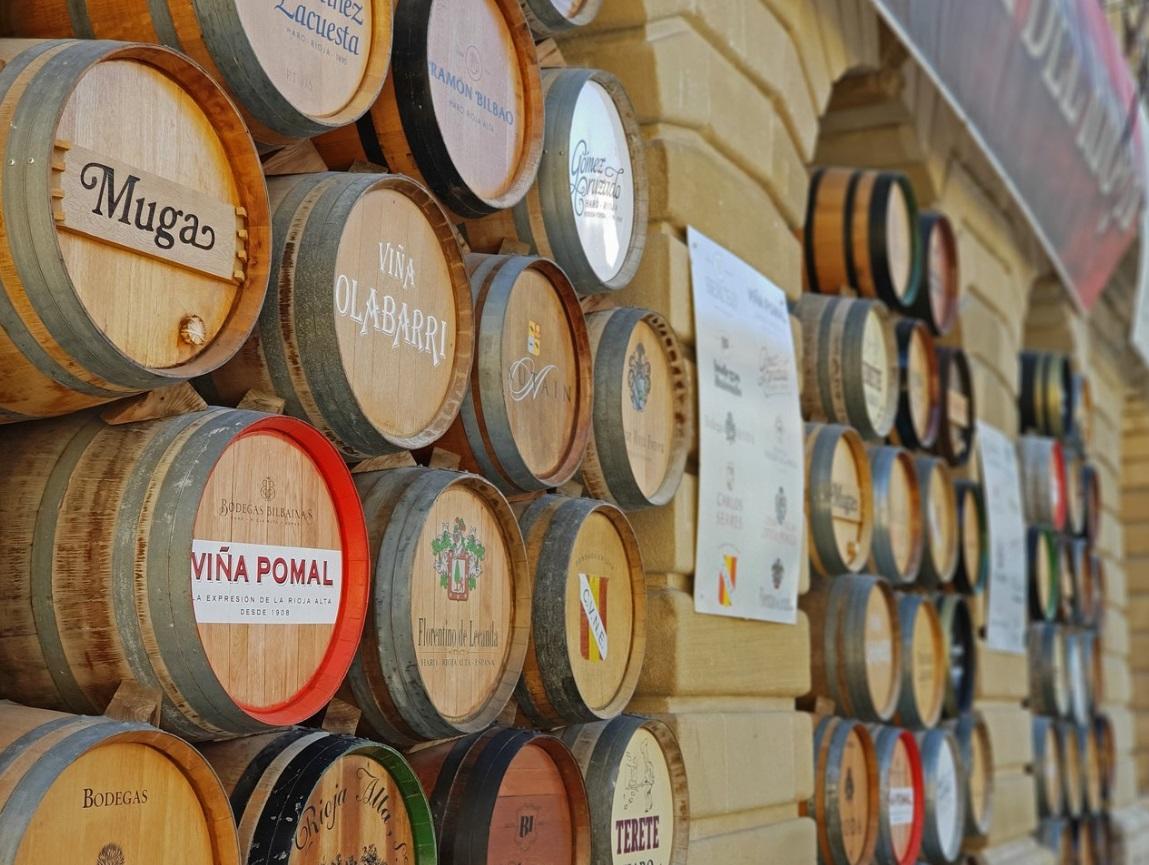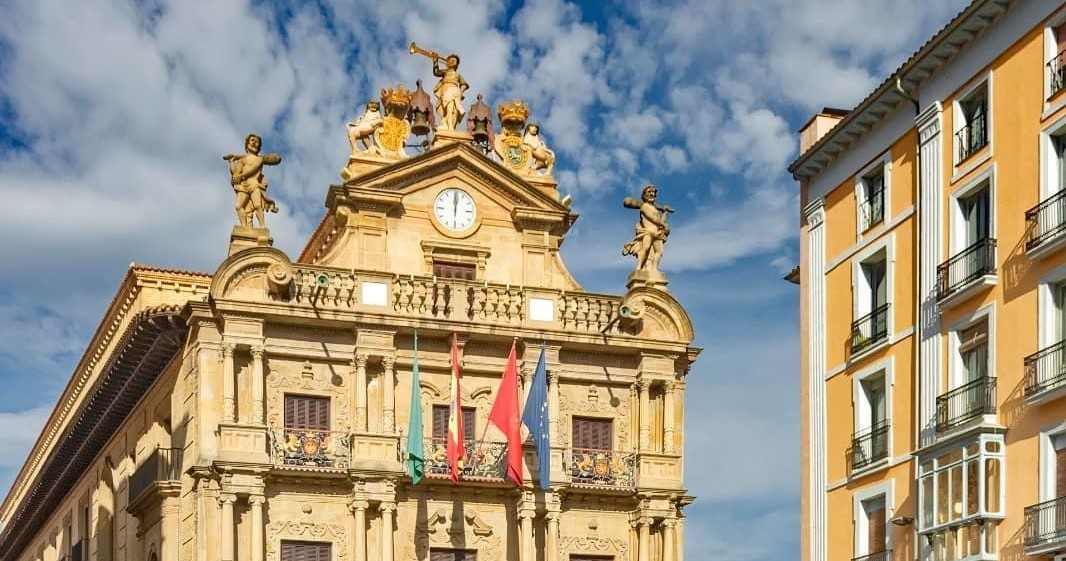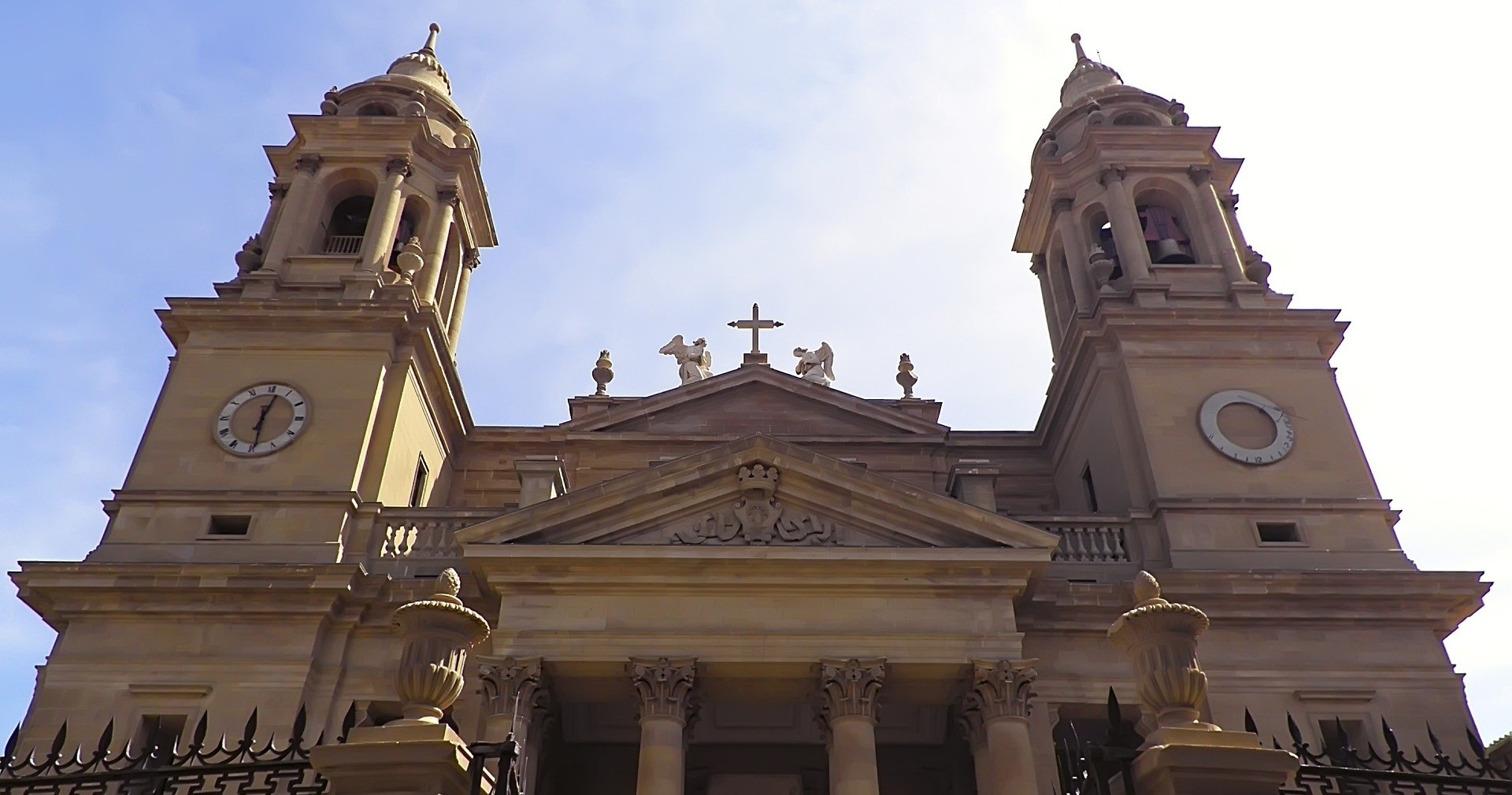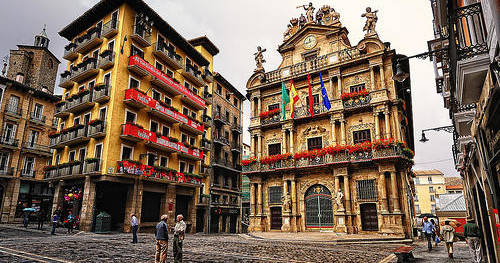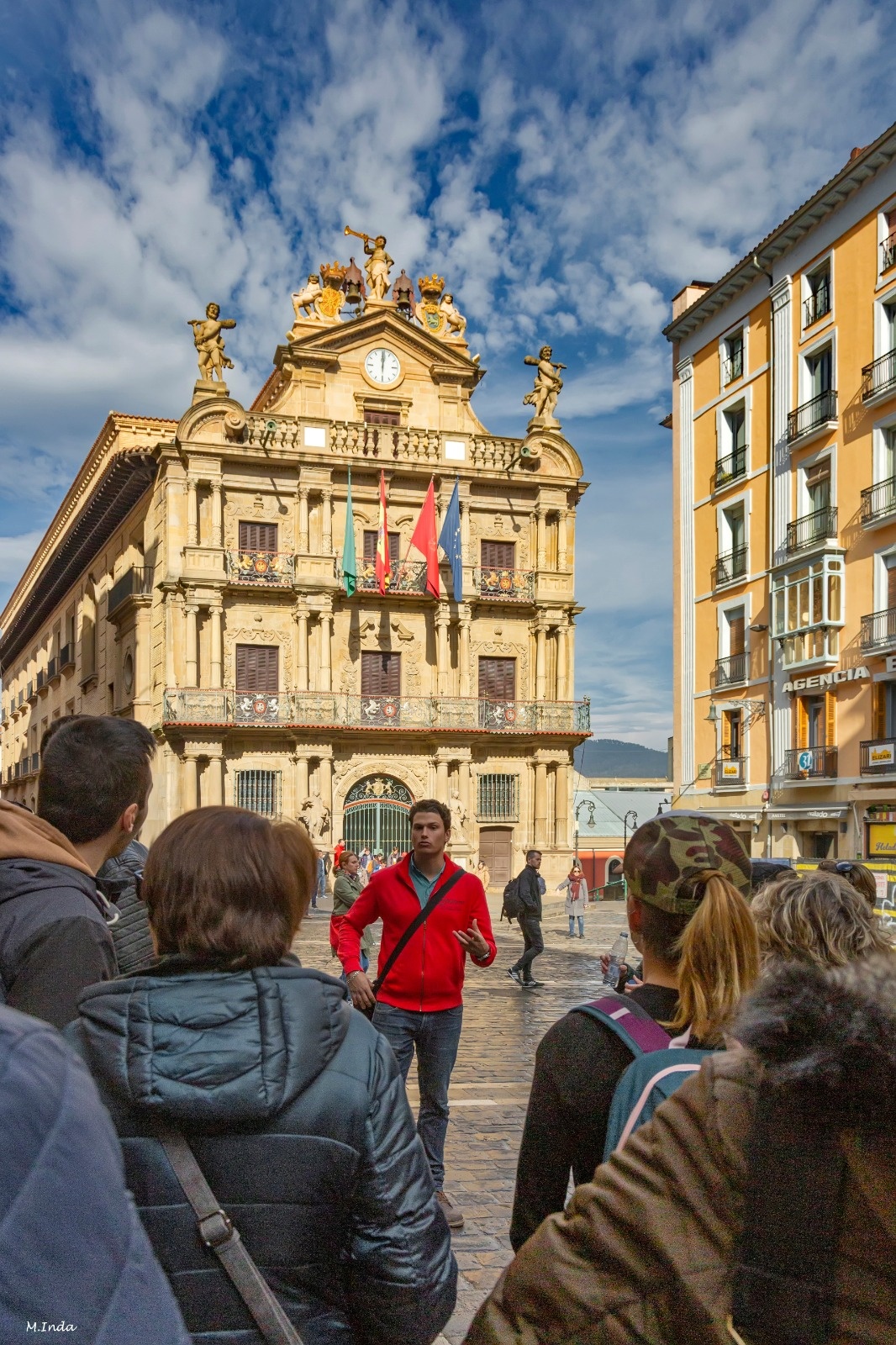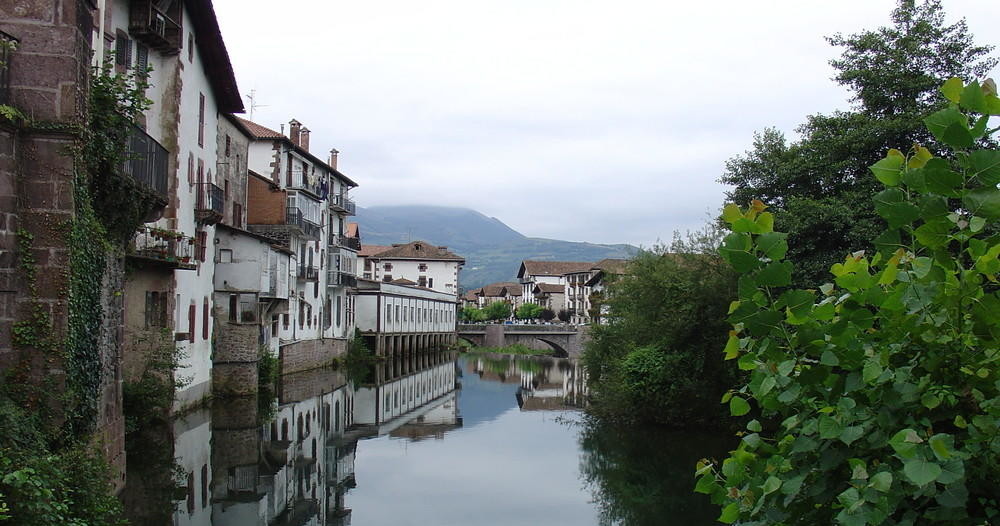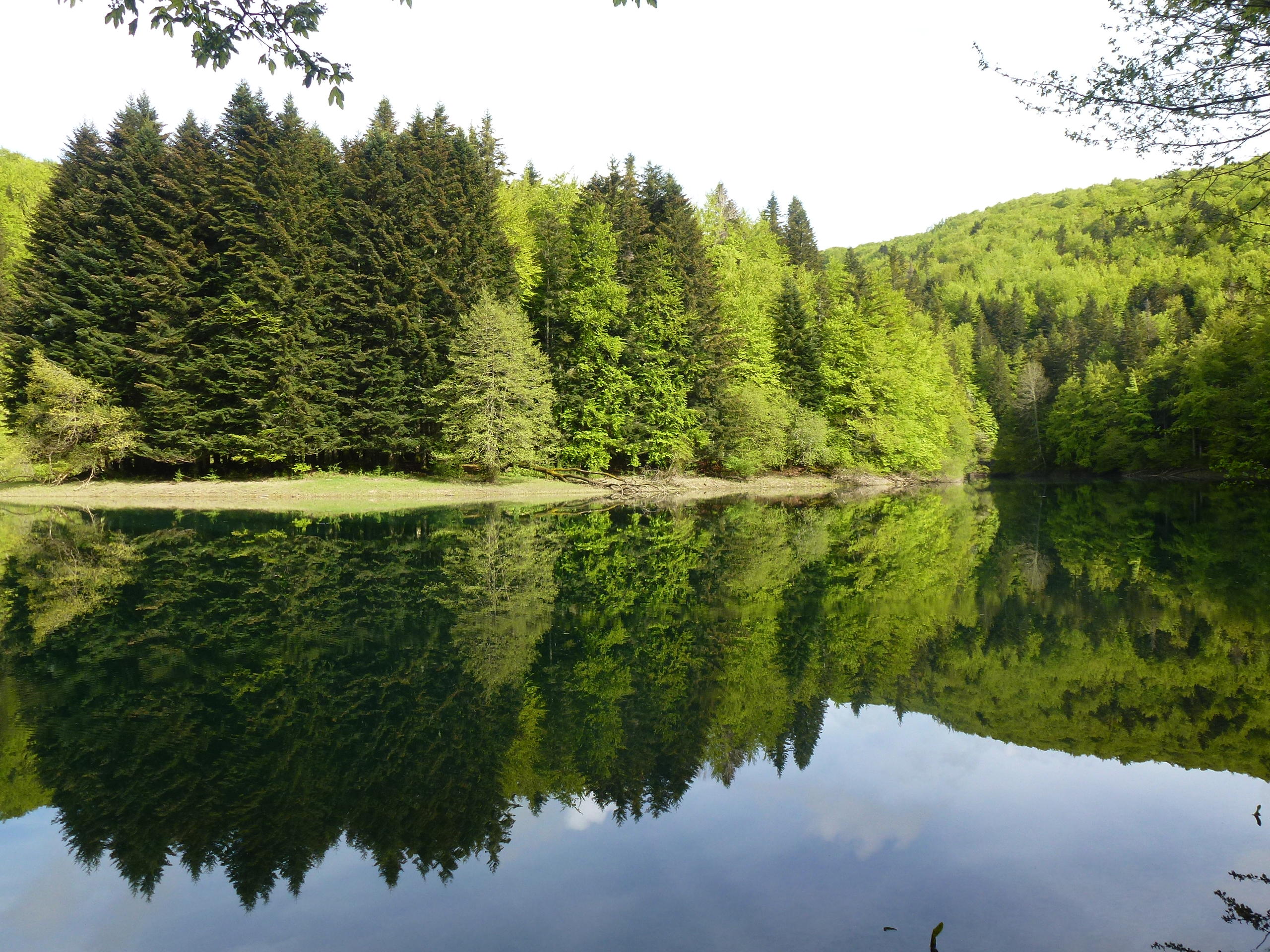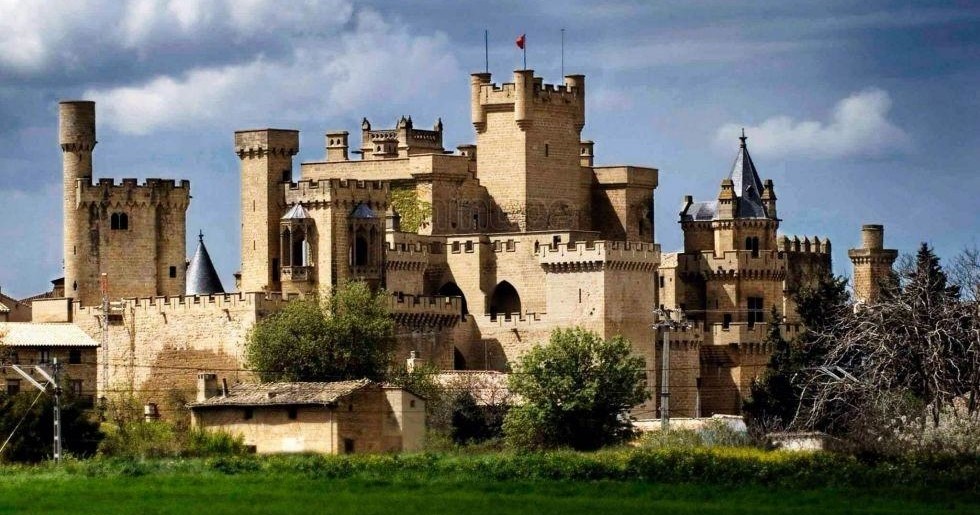Travelling to Pamplona with friends is a great idea, whether for a weekend or during the festival of San Fermín, — the number of days will depend on your stamina. The capital city of Navarre is known worldwide for the Sanfermines, as the festival of San Fermín is popularly known in Spain. But Pamplona is equally worth visiting for its history in the shape of its streets and monuments and for its outstanding gastronomy.
Located in the north-east of the Iberian Peninsula in the plain of the river Arga, Pamplona is on the border of the Basque Country and very close to the French frontier. You can travel to the city by car, bus, by train or by plane (the airport is in Noáin, six kilometres from the city).
Any time of year is good for a visit to Navarre’s capital city, bearing in mind that from July 6th – 14th the city is transformed with the arrival of thousands of people for the San Fermín festival.
Below, we offer a range of suggestions if you’re travelling to Pamplona with friends.
Things to do in Pamplona
Sightseeing: from the historic quarter to the Citadel
On one hand, you have the modern city, with its gardens, contemporary buildings and great avenues while on the other, you have the historic quarter, where you can immerse yourself in history as you wander around the narrow streets, the Citadel and Pamplona’s famous city walls.
A visit to the old quarter, which still retains its medieval layout, is one of Pamplona’s greatest attractions for tourists, unless your visit coincides with the Sanfermines. It is possible to see the historic quarter in a day, but you could also spread your visits over the time you have available with your friends, taking into account any other reasons that may have brought you to the capital of Navarre.
The burghs, or the complex of neighbourhoods of medieval origin, are still the heart of the city. They are: Navarrería, San Cernín and San Nicolás. The link that connects these three neighbourhoods is Pamplona’s Town Hall (Ayuntamiento in Spanish), a Baroque-style edifice dating from the eighteenth century which stands in Plaza Consistorial. It is from the balcony of this building that the ‘chupinazo’ (or ceremonial rocket) is launched to start the famous Sanfermines. The Town Hall can be a good starting point for a tour around the most historic part of Pamplona. What is more, the square is where you’ll find the tourist office.
Very close to the Town Hall stands the Gothic church of San Saturnino (thirteenth century); the Chamber of Audit, Pamplona’s oldest building; and the church of San Lorenzo (nineteenth century), where you can visit the chapel of San Fermín and admire the revered image of the popular saint.
If we walk along Calle Mercaderes (which, at the junction with Calle Estafeta forms the famous bend around which bulls and youngsters run during the Sanfermines), we will arrive at the cathedral of Santa María la Real, completed during the sixteenth century — work on the building commenced in the twelfth century, when the first stone was laid on the site of the old Romanesque church. While the façade is Neoclassical in style, the three naves are in the Gothic style. This is one of Spain’s best-preserved cathedrals.
Retracing our steps along Calle Mercaderes, we will come to the well-known street of Estafeta. Walking along this street will bring us to the Plaza del Castillo, considered the true heart of Pamplona, and which has a great atmosphere with its terraces and bars. From there, a not-to-be-missed sight is the bullring,one of the largest in Spain and the place where every San Fermín bull run ends.
To round off your visit to the city of Pamplona, remember to move away a little from the historic quarter to visit the Citadel and the city walls, an area which has been declared a National Monument and which constitutes one of Europe’s best-preserved military complexes.
The Sanfermines experience
If you are visiting Pamplona with friends, the highlight of the year are the Sanfermines, Pamplona’s leading festival and a celebration well known all over the world. The Nobel Literature prize winner Ernest Hemingway popularised them decades ago, but they go back much further: according to historians, the San Fermín festivals have been known since the twelfth century, when they were simply ceremonies in honour of the saint.
The Sanfermines begin on 6th July, the day when ‘El chupinazo’ [the ceremonial rocket], is fired. The Plaza Consistorial fills with a multitude of people dressed in Sanfermines costume: a white shirt and trousers, a red sash and the festival’s traditional, red handkerchief.That moment occurs at around midday, and from then on, until 14th July, the date when ‘Pobre de mí’ [‘Poor me’] is sung, also in the Plaza Consistorial, and also at twelve o’clock (but this time at midnight), countless entertaining activities take place in the streets of the city (concerts, festivities, parades, children’s theatre, giants and ‘cabezudos’ [‘big heads’], etc.
The driving force of the San Fermín festival are the bull runs: a tradition whereby people run ahead of six fighting bulls through the streets of Pamplona’s historic quarter. At exactly eight in the morning the bulls emerge from the Cuesta de Santo Domingo. Then they go across the Plaza Consistorial, along Calle de Mercaderes and Calle de Estafeta, until they reach the bullring. The route followed today is that established in the late eighteenth century (the tradition of the bull runs has its origins in the Middle Ages, but it was in the sixteenth century when butcher boys and other young men began to run ahead of the bulls, in defiance of the authorities).
Pintxos, grill restaurants and cider houses
Navarre’s gastronomy occupies a prominent place in Spain’s culinary tradition, so if you travel to Pamplona with friends, you simply must explore it. And there are two ways of doing so: you can go for pintxos, or you can eat in a grill restaurant [asador, in Spanish] or in a traditional Pamplona sidrería, or cider house.
Going for pintxos [the Basque name for Spanish tapas] or ‘irse de poteo’ as it is called by the inhabitants of Navarre, involves moving from bar to bar, sampling the pintxos in the Plaza del Castillo and the streets of San Nicolás, Mercaderes and Estafeta, as well as the neighbouring streets. It is a local custom that you can easily adopt if you are in a group. In addition to the well-known asparagus, peppers stuffed with cod, lamb al chillondrón [cooked in garlic and peppers], and pochas con chistorra [white Spanish beans with a type of chorizo], some of the more traditional pintxos, you could order oxtail, croquettes, plates of octopus, liver pintxos, puff pastries and other ‘haute cuisine’ tapas.
If you’re looking for a good meal followed by conversation, it’s more usual to go to an asador [grill restaurant] or a sidrería [cider house].There, you could order a good steak or sirloin from locally-reared cattle, chorizo cooked in cider, cod tortilla [omelette], cod with peppers, hake, turbot, lamb al chillondrón, or rack of lamb. And to drink: cider brewed on the premises or a good Appellation of Origin Navarre wine.
From museum to museum
Your trip to Pamplona with friends could be for a weekend, for the whole of the Sanfermines, or for whatever length of time suits you. Whether you spend a weekend or several days in the city, there is no better plan than to visit Pamplona’s museums if you want to gain a real insight into the local culture.
To trace the progress of Navarre’s history, you need to visit the Museum of Navarre (No 47, Cuesta de Santo Domingo).Here you can see exhibits ranging from Paleolithic finds to works by Francisco Goya, in addition to nineteenth- and twentieth-century Navarrese painting.
Another outstanding museum is the one belonging to the Cathedral of Pamplona (Calle Curia, unnumbered). Here, you can see pieces of Navarrese religious art, including Gothic and Romanesque images, gold work and reliquaries, and Renaissance and Baroque paintings by famous artists such as Van Dyck.
Finally, the Museum of the University of Navarre (University Campus, unnumbered), houses an interesting collection of contemporary art, including works by Spanish artists of the second half of the twentieth century, and by renowned international artists. Exhibits include works by Picasso, Kandinsky and Chillida. There is also an area devoted to photography, which includes images captured by legends such as Robert Capa.
Tips and recommendations
You can travel to Pamplona by car or, perhaps more commonly, by bus — although you could also arrive by train or by plane. It takes almost three hours to reach Pamplona from Madrid, and a little longer from Barcelona.
In winter, Navarre is cold, with frequent rain. If you want to avoid the bad weather, the best time to visit Pamplona is from spring onwards, and especially in summer.
One important piece of advice is that if you are travelling there for Sanfermines and you want to book accommodation, you will need to do so well in advance. The massive influx of tourists means it is impossible to find any accommodation, at least at a reasonable price, if you try to book in the days leading up to 6th July.
If you are unable to spend much time in Navarre, it is always worth booking official guided tours of the city or free tours.




































































